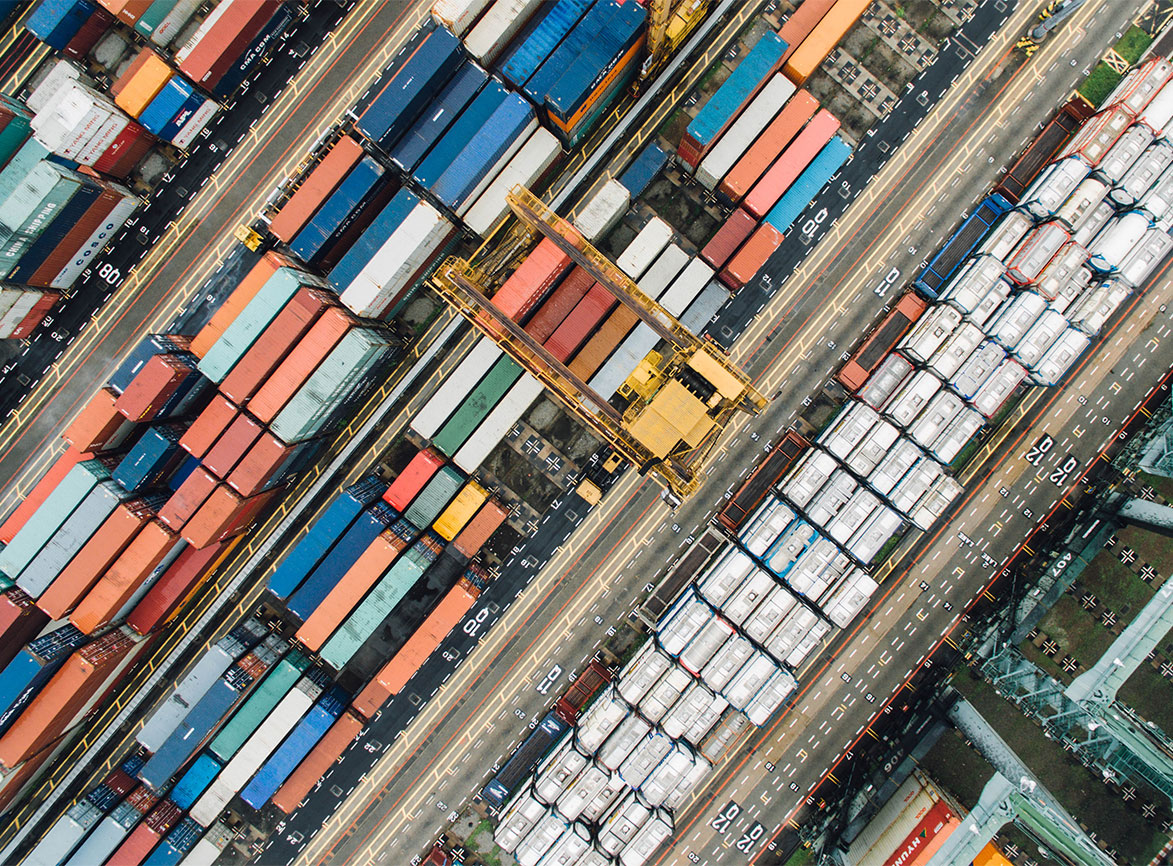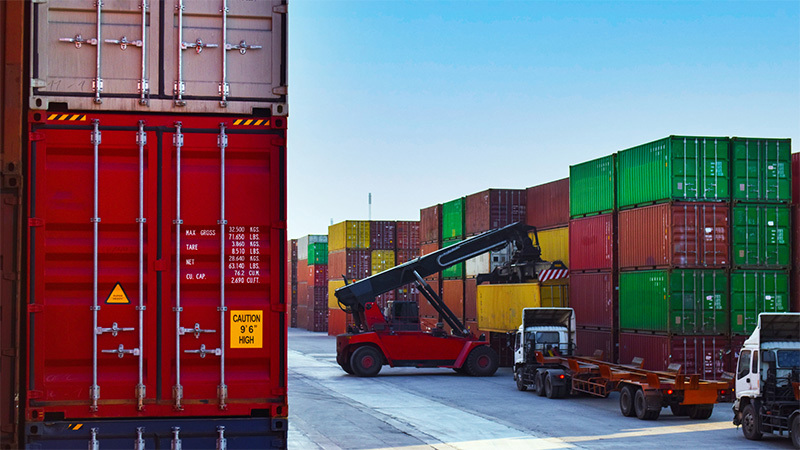In global logistics, ocean shipping is the backbone, moving around 80% of worldwide trade. Yet, the critical inland segments—drayage, over-the-road trucking and rail—are often overlooked despite their significant impact on cost efficiency, service quality, and customer satisfaction. Issues such as port congestion, trucking delays, and fragmented inland logistics operations consistently highlight the pivotal role inland transportation plays, compelling ocean carriers to reassess its strategic importance.
The overlooked strategic link
Inland transport connects maritime operations with the final delivery points, bridging ocean freight to warehouses and customer locations. While the ocean leg is meticulously planned, inland transport, specifically drayage and rail, traditionally receives less attention, often treated as secondary. This oversight can amplify disruptions, causing delays, inefficient container utilization, increased demurrage costs, and ultimately impacting the carrier's bottom line.
Congestion at major ports frequently limits truck productivity, significantly extending container dwell times and inflating operational costs. Delays resulting from insufficient trucking capacity, driver shortages, and inefficient asset utilization further underline the importance of more effective inland logistics management.
Challenges ocean carriers face in inland logistics
Ocean carriers frequently rely on third-party logistics providers (3PLs) for inland transport, leveraging their regional expertise and networks. However, several inherent challenges complicate effective inland logistics management:
- Fragmented systems and stakeholders: Inland transport involves coordinating numerous independent entities—3PL’s, trucking companies, railroads, port terminals, warehouses—each using different processes and systems. This fragmentation results in siloed data, limited integration, and prevents carriers from achieving comprehensive visibility and control.
- Limited visibility into inland moves: Fragmentation also contributes to poor visibility. Without integrated tracking systems, carriers frequently lack real-time updates about inland cargo status. Whether containers face delays at terminals or disruptions at rail ramps, the absence of timely information leads to reactive management, negatively impacting service reliability and customer satisfaction.
- Manual, outdated processes: Drayage operations often still rely on outdated, manual methods such as phone calls, emails, and legacy EDI messaging, increasing the risk of communication delays and operational errors. Paper-based gate passes and manual dispatch instructions further compound inefficiencies, resulting in unnecessary wait times, increased demurrage fees, and frequent empty backhaul trips.
- Capacity and resource constraints: Ocean carriers also face a lack of access to regionally integrated intermodal networks, which complicates their ability to coordinate moves across different geographies. Persistent driver shortages and limited equipment availability—such as chassis shortages at rail ramps—continue to exacerbate inland logistics complexity. These constraints can result in prolonged terminal holdups, additional storage and demurrage fees, and delayed or cancelled deliveries.
- Operational inflexibility and communication gaps: Shippers—including BCO and Freight forwarders— often encounter rigid operational processes under traditional ocean carrier arrangements, limiting their ability to divert or modify transport modes as disruptions occur. Additionally, insufficient communication about delays or cancellations exacerbates issues, leaving stakeholders uninformed and ill-prepared to manage disruptions proactively.
These multifaceted challenges underscore that while 3PL partnerships remain vital, ocean carriers must focus on enhancing internal processes and integration via technology to elevate efficiency, reliability, and profitability.
The technology gap in drayage and rail exacerbates challenges
The slow digital adoption in the inland transportation industry, particularly among trucking and railroads significantly intensifies the logistics challenges faced by ocean carriers. While drayage, often handled by small-scale trucking operators, is notably technology-averse, rail also grapple with fragmented systems and weak real-time tracking infrastructure, intensifying issues related to data fragmentation and limited visibility across the entire inland network.
- Lack of standardized digital solutions: Without uniform digital standards, ocean carriers struggle to maintain consistent and accurate data flows from trucking, and rail operators. Rail networks frequently utilize legacy scheduling and tracking systems that don't easily integrate with carrier platforms impairing operational visibility, proactive planning, and coordinated decision-making across all inland modes.
- Delayed response to disruptions: The absence of advanced tracking and communication technologies across trucking and rail delays critical information flow, forcing carriers into reactive management scenarios. For rail specifically, outdated tracking methods often result in blind spots during transit, causing shipment uncertainty until rail cars reach designated checkpoints. This delayed visibility increases operational costs, creates bottlenecks at rail ramps, terminals, and transfer points, and reduces overall service reliability.
- Reliance on manual processes and paperwork: Both trucking and rail continue to depend heavily on manual processes—such as physical paperwork for gate passes, proof-of-delivery documents, manual invoices, and rail bills. These manual practices introduce frequent errors, slow down cargo movements, cause billing inaccuracies, and escalate costs related to demurrage and detention fees.
- Underinvestment in digital infrastructure: Many trucking operators, along with rail companies, have historically underinvested in advanced transportation management systems (TMS), digital marketplaces, real-time tracking tools, or IoT-enabled visibility solutions. This reluctance reinforces reliance on manual, paper-based processes, outdated EDI exchanges, or legacy rail scheduling platforms. The resulting technology gap significantly hinders efficiency and coordination across multimodal inland logistics segments, limiting opportunities for optimization and growth.
To effectively mitigate these challenges, ocean carriers must leverage advanced digital platforms that enhance integration, visibility, and responsiveness in inland logistics, providing a solid foundation for improved operational outcomes and customer satisfaction.
Transforming inland transportation with technology
Technology is poised as the critical lever to address inland transportation inefficiencies. Digital logistics platforms, exemplified by Blume Global, enable ocean carriers to overcome these longstanding challenges, delivering tangible operational and strategic benefits:
- Real-time visibility and exception management: Modern logistics platforms integrate data from multiple stakeholders, providing carriers with real-time visibility across inland transport operations. This comprehensive view allows for proactive exception management, enabling rapid responses to disruptions and improved overall service reliability.
- Process automation: Automation of key inland logistics functions—such as carrier selection, load tendering, dispatch management, and invoicing—significantly reduces manual workload, minimizes errors, and enhances operational speed and efficiency.
- Smart carrier selection: Leveraging advanced analytics, digital platforms enable carriers to assess drayage partner performance systematically. This capability facilitates optimal carrier selection based on reliability, cost-efficiency, and availability, improving service quality and reducing costs.
- Multimodal orchestration: From drayage legs to intermodal rail segments, modern platforms offer end-to-end coordination across transport modes—ensuring execution consistency, performance benchmarking, and visibility across the full inland journey.
- Maximizing asset utilization: Technologies that enable street turns—reusing import containers for export loads—can significantly reduce empty miles and associated costs. Such efficiency improvements directly benefit carriers' profitability and sustainability objectives.
- Seamless communication: A centralized customer portal enables structured communication and provides visibility into shipment milestones across inland moves and modes, ensuring smoother coordination with all partners
Real-world impacts of inland optimization
Industry evidence supports the transformative power of inland logistics optimization:
- Reduced congestion and costs: Effective digital platforms have shown potential savings of millions of truck-miles annually, significantly lowering operational costs and emissions by enabling more street turns and fewer empty container movements
- Increased profitability: By capturing a larger share of inland transportation revenue and reducing operational inefficiencies, ocean carriers can notably enhance their profit margins
- Improved service reliability: Real-time visibility solutions help carriers achieve higher on-time performance, enhancing customer satisfaction and competitive differentiation.
- Stronger partner collaboration: Integrated digital workflows and shared visibility strengthen coordination across drayage, rail, and terminal partners, improving agility and enabling faster response to exceptions or changes in shipment plans
- Stronger regulatory compliance: Digital systems provide consistent documentation, milestone tracking, and audit trails across inland operations, allowing ocean carriers to execute all processes in line with internal policies and regional compliance regulations.
- Scalable growth opportunities: With a digital-first inland logistics strategy, ocean carriers gain the agility and visibility required to expand into new geographies and offer end-to-end service in more territories, without adding complexity.
Driving inland efficiency through connected execution
What’s needed is a connected, data-driven, and agile operating model. Platforms like Blume Global—with seamless integrations across motor carriers, terminal operators, and comprehensive rail networks—enable ocean carriers to gain complete multimodal shipment visibility. Ocean carriers can automate workflows across trucking and rail, including dispatching, carrier selection, invoicing, and managing rail billing processes, significantly reducing manual workloads and operational errors.
Blume also provides mobile tools specifically for truckers, streamlining coordination, enhancing real-time GPS-based visibility, simplifying documentation tasks such as uploading proof of delivery, insurance, or driver certifications, and enabling quick invoice submissions—all from a driver’s mobile device. Additionally, Blume delivers precise, IoT-enabled real-time visibility into rail shipments, eliminating common rail visibility gaps and empowering proactive management. Its extensive North American rail schedule publications further help ocean carriers effectively plan, optimize, and execute inland moves, ensuring smoother multimodal coordination.
Blume’s seamless integration capabilities with existing ocean carrier TMS platforms further minimize operational disruption, maximizing efficiency and ease of implementation across both trucking and rail modes.
These multimodal, digitally connected capabilities go beyond mere operational enhancements—they represent clear competitive advantages. Ocean carriers digitizing inland operations can significantly improve asset utilization, increase revenue per shipment, reduce manual coordination dependencies, and consistently offer differentiated service levels to their customers.
contact us
Contact Us

